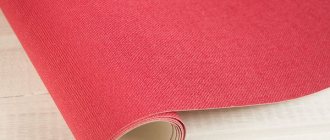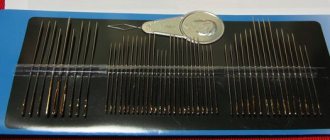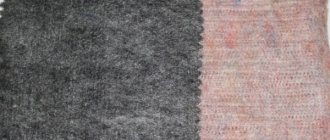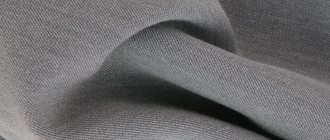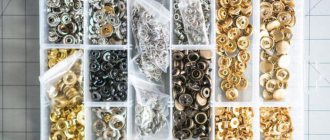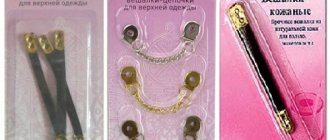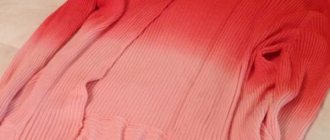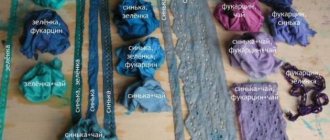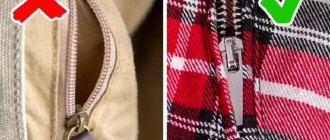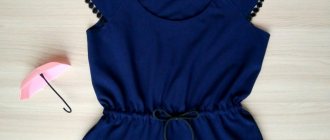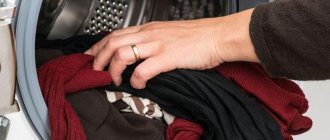Flax is a herbaceous crop measuring from 0.5 to 1.5 meters in height. The plant is annual or perennial, but every year it is harvested and then sown again. When mature, it is easy to recognize the plant by the shape of its leaves and stems (cylindrical and smooth, branched at the top). And also in the shape of the flowers (the calyx consists of three petals with white edges, the crown of which consists of five petals of an amazing blue color, so valued in the nineteenth century. And the seeds (oval in shape and red-brown in color with a yellow stripe on the sides, known to everyone and used in folk medicine by our grandmothers, coated with an oily substance).
Like many crops known since ancient times, flax, as a result of selection, became widespread in various climatic zones, gradually changing and improving its qualities.
Flax is one of the oldest plants grown by the Russian people. The history of flax goes back more than 9,000 years. Even the ancient Slavs used the word “canvas” in their speech. So, with this word they did not call any fabric, but exclusively linen. After reading this article to the end, you will learn a lot about this unique plant.
The homeland of ordinary flax is the Middle East. Flax deserves to be called one of the oldest cultivated plants. The cultivation of flax dates back to prehistoric times. Both seeds, as well as clothing woven from flax fibers, have been found in ancient Egyptian tombs. In fact, the first linen mentioned in the Bible, and confirmed by archaeologists and historians, was woven from linen.
Like thousands of years ago, flax is of interest to us, not only as a crop used in spinning production and occupying many thousands of square kilometers, ranging from the Iranian plateau to Europe, and from Egypt to Ethiopia. But also as a crop, from the grains of which valuable oil can be obtained, used as a food product and as an important element in the production of medical products.
Even today in Ethiopia (where flax cultivation is so old that it dates back to the Neolithic era), flax seeds are used to make concentrated bread for travel.
On the other hand, only recently have flax seeds and flax flour been used as an emollient and anti-inflammatory agent, after centuries of recognition and use of this remedy.
In Russia, flax became widespread in the 9th century, as is known from chronicles. Linen clothing became popular among the Slavs, which was also described by foreign authors. Linen fabric was valued so highly in Rus' that even the Grand Duke Yaroslav himself, who ruled in the mid-11th century, issued a decree punishing the theft of linen fabric and clothing.
The production of linen fabric was widely developed during the time of Peter I, who issued an imperial decree “On the beginning of the linen and hemp industry in all provinces.” This is how linen manufactories appeared, which were later considered the best industrial enterprises.
The actions of Peter and Catherine II continued, allowing the export of flax. Soon the entire linen industry in Europe used Russian flax as a raw material.
A glorious and long history of linen
Historians say: this is the first material that people learned to make. It was linen that managed to oust animal skins from use. With him, civilization was born, the concepts of aesthetics and hygiene were born.
Scraps of fabric were found near a lake in Switzerland during ancient excavations. Fiber flax material is mentioned in the Bible. Patterns on Greek amphorae and Egyptian mosaics clearly demonstrate the process of production of linen. These factors indicate not only the ancient history, but also the popularity of the fabric.
In Greece, linen clothing was a privilege of the upper class. In Egypt, fabric was equated to money; you could pay with natural scraps. In Rus' they also valued the material. Prince Yaroslav even introduced punishment for the theft of flax. With his light hand, an additional paragraph appeared in the church charter.
The appearance of flax in Russia dates back to the second millennium BC. Under what circumstances the properties of the textile product were discovered and its intensive use began is not known for certain. But the memory of the elite status of the natural material has been preserved.
It was inaccessible to ordinary peasants. Sundresses and shirts made from it were considered not only festive, but also hygienic. They looked elegant and did not irritate the skin. Due to its high decorative value, linen in our country is called northern silk. He was chosen by members of the royal family. At the beginning of the 19th century, several factories worked for the royal court. They were engaged in sewing outfits for the Romanov dynasty.
Production Features
Extraction of flax fibers is a labor-intensive process. If in cotton they are in a boll, then in flax they are in the stem and tightly glued together. Previously, extracting raw materials for spinning took a long time.
The plants were cut and left in the field. Under the influence of weather conditions, bacteria began to develop. This process led to faster debonding of the fibers.
The technology for producing woven fabric from the spinning crop has not changed to this day.
Nowadays, many processes are automated, so they go faster. But manufacturing is just as expensive and complicated.
Note: Egyptian craftsmen had a special spinning technique. The result was superfine matter. Even rolled up in several layers (up to 5), it remained transparent and the skin was visible through it. According to legend, such fabric could be pulled through a ring.
The manufacturing technology of natural textiles includes several stages:
- Dolgunets are cut with a combine harvester and ground into straw.
- The stems remain on the field in the open air for 2-3 weeks.
- The influence of dew, sun and other natural factors improves the separation of trusta - the fibrous part necessary for spinning.
- The prepared straw is collected, dried and mechanically processed.
- Comb out the trust. The roving (a thin thread of weak twist) is separated and a ribbon is formed from it.
- Fibers are interwoven using different methods, which affects the aesthetics and characteristics of the final product.
- The resulting grayish canvases are bleached and dyed. The color palette is huge: orange, yellow, gold, brown, blue, burgundy.
The duration of the process affects the cost of the canvas. Prices for linen cuts in the store are slightly higher than for their cotton counterparts.
Control of flax pests and diseases
To combat flax trips, butterflies and flax flea beetles (flax jumper), use Karate 0.25 EC at a dose of 0.3 l/ha.
The fight against the main diseases affecting oil flax or long flax and reducing the occurrence of serious diseases comes down to compliance with basic agronomic rules:
- Flax should be grown in one field no more than once every 6-7 years.
- For sowing, use healthy and proven seeds.
- Fertilize the soil according to recommendations. Excess nitrogen reduces resistance to disease. A lack of potassium affects the quality of fibers and increases the development of diseases in plants. Increased disease resistance is helped by sufficient levels of zinc, boron, copper, and manganese in the soil.
- Use selected flax varieties that are disease-resistant.
Compound
In clothing production, 100% flax and with additives are used. The chemical composition of the natural product is unique. 80% is cellulose. 20% is accounted for by various impurities - coloring, wax-containing, mineral, fatty. Among the additives, lingin stands out. Its content can reach up to 5%. This component is responsible for the dimensional stability of the fabric and gives it rigidity. The smaller it is, the softer the fabric. Varieties with minimal lingin content are highly valued. They are soft, gentle, cozy, with good tactility.
Texture
Linen attracts with its special texture, combining gloss and matte. The surface emits a subdued shine, so the fabric looks presentable. This is a vegetable fabric, so it is not prone to stretching; it can hardly be called elastic. If flax has not been processed, its hardness can be easily felt. Additions of other fibers help improve texture and improve quality characteristics. The material becomes soft and smooth.
A unique feature of linen fabrics is the unevenness of the threads. If you look through the fabric into the light, the nodules will become clearly visible. Designers have successfully used this property when making heavy drapes or light curtains. Thanks to this structure, the sun's rays are diffused gently and create comfort in the room.
Let's talk about the colorist
The color palette has no restrictions. On sale there are both bright shades of things for children, and muted ones in costume varieties for adults. The color of a fabric largely depends on the processing it has undergone in a textile factory. Highlight:
- undyed linen. This is the matter of our ancestors. Its natural tone is greyish. The texture is rough. There are villi on the surface;
- plain-painted: subject to additional painting. The result is a uniform shade: pastel or rich;
- colored: this color is created at the production stage of the canvas. Multi-colored threads are used for weaving. The result is checkered, striped, jacquard patterns, with a gradation effect, and polka dots;
- printed: prints are applied by printing onto finished textiles.
Linen fabric is capable of self-bleaching. During use, the gray tint disappears, gradually turning whitish. The speed of this transformation is affected by the frequency and intensity of washing. If you wash items frequently, at high temperatures, with detergents containing aggressive ingredients, linen will quickly turn white.
But the benefits of whitening are not just about changing the color. It also has a positive effect on texture. The surface becomes soft, smooth and shiny.
On sale there are printed fabrics with large patterns on the edges and minor patterns in the center. This is coupon linen. Prints act as edging and enhance decorative characteristics.
Varieties of flax
Linen fabric is heterogeneous. There are several classifications based on different parameters.
By composition
There is pure flax and half flax. In the latter case, we are talking about cotonization, that is, the reduction of long fibers to cotton length. Shortened threads retain spinning ability and all basic characteristics. They are easier to mix with other additives.
All linen fabrics are divided into 2 types:
- natural: contains only plant ingredients. Either 100% linen, or there are cotton impurities. The second variety is called flax-visher. Cotton reduces creasing and increases elasticity. Such products drape well, and also acquire a massage effect due to the formation of micro-fractures in places where the fibers bend. But the visher serves less well than its pure linen counterparts;
- mixed: lavsan or viscose is added to fibers. At the same time, it remains environmentally friendly and hypoallergenic. But shrinkage during washing is reduced. Combined fabric is easier to iron.
The name of the process “cottonization” comes from the word “coton” (in other words, cotton). It can be mechanical (rupture) and chemical (treatment with cooking compounds).
By weave
The density of the fabric and its scope of application depend on this parameter. There are 5 common types of weaving.
| Weave | Peculiarity |
| Polotnyanoye | Classic look. The fabric is wear-resistant, has a continuous thread structure, and is lightweight. |
| Jacquard | It is characterized by a special texture, which is why it has a second name – large-patterned. Textured jacquard is durable and dense. |
| Twill | A unique feature is the presence of diagonal lines on the surface. Characterized by high resistance to mechanical damage. |
| Patterned | An example of this type is the matting. The weave of the fibers is rough, but this does not affect tactility; the fabric remains soft. |
| Openwork | Available in double and single. In the first case, interesting relief patterns are obtained. |
By texture
Fans of linen know well how different it is even when touched, what opposite sensations it gives. Such differences are due to texture. In the specialized market there are:
- Crinoline. Quite dense, used for linings.
- Burlap, pleasant in terms of the sensations it evokes, but slightly rough. At the same time thin and light.
- Shirt, dress fabric. The surface is smooth and does not cause discomfort when touching the body. But it is rarely made only from flax. Cotton threads or a small percentage of synthetics are often added.
- Marlevka. The unusual structure of the material and its translucency make it suitable for sewing summer dresses. The surface is smooth, there may be a crash effect (imitation of slight bruising).
- Seamless. Maximum even and smooth. Sometimes, to increase decorativeness, the front side is coated with metal coating. This material looks very impressive.
In stores you can find an interesting variety of blackout linen. This fabric has nothing to do with natural fiber. It is made from polyester and is characterized by a relief created by additional braiding of facial threads. But it repeats the structure of flax. This feature is reflected in the name.
By area of use
Flax has found its use in various areas, thanks to its many varieties. The material is divided into 2 large groups: linen and technical. But there are a huge number of subspecies.
| Varieties | Peculiarities |
| Damascus | Soft yet durable. Products made from it cannot be called cheap, but they last a long time. |
| Batiste | Thin, translucent variety. Batiste makes beautiful bedding sets. |
| Kolomenok | It is made not only from flax, but also from wool. The main threads are thickened, but this does not interfere with smoothness. Used for making summer suits. |
| Canvas | Matte shine, pleasant sensations, and ease of care have made this look in demand when sewing light jackets, shirts, skirts, and dresses. |
| Gozhka | Triple weave makes the material warm. Coco Chanel loved costumes made from this fabric. |
| Sackcloth | Internal fibers (lut) make this option tensile and able to withstand heavy weight. |
| Canvas | The name speaks for itself. Initially, sails were made from it. They protected from atmospheric phenomena: rain, sun, wind. Today it is used as a covering material. Canvas makes beautiful and comfortable shoes and reliable workwear. |
| Ravendook | A material well known to artists, because canvases are made from it. The rough surface absorbs dyes well and retains them for a long time. |
Technical flax is sometimes called terraced flax. Essentially, it's the same thing. The distinctive features of this group are its rough texture, high density, and tensile strength (it is impossible to tear it apart with your hands).
Description of flax
Flax is a genus of annual plants from the Flax family of the same name. Flax is a grass that can be either annual or perennial.
Flax leaves are arranged alternately on the stem. Flax flowers have an entire ovary, are always five-petaled, have five developed stamens and the same number of underdeveloped ones, shaped like threads or denticles.
The flax fruit is a box of five nests, each of which is divided into half-nests. Each half-nest carries one seed.
Linen itself as a genus has more than 100 species. However, the most important of all is spinning flax (ordinary). It is an annual hairless grass with a stem 30-60 cm or more in height.
Material characteristics
The value of “northern silk” is explained by good performance indicators, including:
- Strength. It is almost 2.5 times higher compared to cotton analogues and reaches 70 cN/tex.
- Chemical inertness. Resistant to organic solvents.
- Low elongation. The material cannot boast of elasticity. Therefore, it is often used as spacer edges.
- Hygroscopicity. Linen absorbs moisture well, which allows you to remain comfortable during the heat. Moisture absorption reaches 12%.
- Thermal conductivity. The linen surface is always cool, which provides a pleasant feeling. Body temperature in such outfits is 3-4 degrees lower. This saves you from overheating in hot weather.
Even in ancient times, it was noticed that natural fabric stimulates blood circulation and relieves fatigue. And silica, which is part of the fabric, makes it antibacterial, as it prevents the development of pathogenic microflora.
Useful properties of flax
Flax seeds
The most valuable are flax seeds, which contain a huge amount of vitamin F. Vitamin F is a fat-soluble and anti-cholesterol vitamin. As is clear from the description, the vitamin is able to cleanse blood vessels of bad (low-density) cholesterol, as well as strengthen the walls of blood vessels. In addition, vitamin F helps improve blood circulation and normalize blood pressure.
Flax seeds
In addition to vitamin F, flax seed contains a whole complex of other vitamins: A, B1, B2, B5, B6, B9, C, E, K, PP; and microelements: iron, sodium, calcium, potassium, magnesium, manganese, copper, selenium, phosphorus, zinc.
Flax seeds contain several unsaturated fatty acids:
- omega-3;
- omega-6;
- omega9.
Thanks to this, flax is used in the fight against excess weight, cardiovascular diseases, metabolic disorders, atherosclerosis, diabetes, hypertension and bronchial asthma.
Substances contained in flaxseed should be used to prevent cancer, rheumatism and osteochondrosis.
Flax seeds have the following beneficial effects:
- cleansing - dissolve cholesterol plaques and cleanse blood vessels, as well as the gastrointestinal tract due to the laxative effect;
- wound healing, bactericidal, anti-inflammatory.
Linseed oil
Another unique flax product is flaxseed oil. The content of polyunsaturated fatty acids in flaxseed oil is significantly higher than in fish oil.
Flaxseed oil can replace the consumption of red fish and seafood, thereby reducing the risk of developing cardiovascular diseases.
Taking flaxseed oil daily has been proven to lower cholesterol, thin the blood, and generally reduce stress on the heart.
Advantages
Among the advantages of popular fabric are:
- Environmentally friendly. The production does not use chemicals that are harmful to the environment or human health.
- Wear resistance. You can wear it every day and not worry about the appearance of shiny areas. It withstands washing well, does not turn yellow, does not fade.
- Antistatic. Static electricity does not accumulate. Thus it does not attract dust.
- Antibacterial. Even dense fabrics are not subject to rotting. When kept in humid conditions, mold does not grow on them.
- Comfort. Linen clothing is comfortable to wear. It breathes due to the presence of micropores, quickly absorbs sweat, saving you from the greenhouse effect.
An advantage of plant textiles is their elegant appearance. Painted and decorated with various decor (stylish buttons and other fashionable accessories, satin ribbons, colorful prints, embroidery), it looks luxurious and aristocratic.
Secrets of choice
To avoid buying a fake, you need to make sure the quality of the fabric. For this:
- feel the linen: it should be cool and soft;
- set fire to a small piece of paper: you smell burnt paper, which means this is a natural product;
- squeeze the edge in your fist: high-quality material wrinkles easily.
And always pay attention to the surface. It should radiate a muted matte shine and be dense over the entire area of the canvas. Acid colors and a strong odor may indicate low-quality dyes.
Growing flax
Fiber flax is an elegant, miniature small plant with turquoise-blue flowers. The grass has one straight, slender stem, branched at the top. The stem is quite smooth with lanceolate leaves about 2.5 cm long. Flax grows to a height of 30-60 cm. Flax seeds are enclosed in ovoid capsules, which are divided into 10 seed compartments. In the middle of each one can be found 6 to 8 glossy, flat brown seeds, measuring 2 to 3 mm in size.
In order to separate the fibers from the stem, the flax is gathered into bunches and placed in water for several weeks, then laid out on a flat surface to dry. It is worth noting that flax seeds are called flaxseed when they are used as a medicine. In water, flax seeds expand in volume and surround themselves with a large amount of mucilage (also called plant glue).
Oil and flour are obtained from ground or crushed flax seeds. Linseed oil applied to the surface of wood forms a hard and transparent film reminiscent of varnish.
Flaxseed oil is used by veterinarians as a laxative for sheep and horses. The gelatinous substance obtained from the seeds is fed to calves. A cake is obtained from flaxseeds, which becomes an excellent feed for livestock.
Scope of application
Flax has found its place in manufacturing:
- clothing for men and women, including specialized clothing, children's items;
- accessories: fashionable bags for the beach are popular;
- home textiles: napkins and tablecloths, towels and potholders, curtains and rugs, bed linen;
- shoes: wear-resistant, but at the same time comfortable fabric will help out in dry weather and relieve fatigue;
- decor: lace, macrame made from yarn will decorate things and the room, knitted toys will add coziness;
- items used in the national economy: tarpaulin, packaging, trim, ropes.
All parts of the plant are involved in production. Waste (tow) is used in construction. Insulation materials are made from fibers. And thin threads have found their place in surgery.
The best Russian manufacturers are considered to be BKLM, Yakovlevskaya Manufactory, and Lino.
Application of flax
The range of uses of flax is very wide. The plant and its components are used in the following industries:
- textile;
- food;
- medicine;
- cosmetology;
- cooking.
Of course, the leading industry that uses flax is the textile industry. Lightweight, breathable linen clothing is popular and in demand all over the world. It is environmentally friendly and does not harm the skin, and in the hot season it is irreplaceable.
Production of linen fabric
Our great-grandmothers could also tell how labor-intensive the process of making fabric from flax was. To obtain linen, it was necessary to perform many labor-intensive operations:
- grow flax;
- collect and dry it;
- wrinkle;
- pat;
- straighten using a spindle and spinning wheel.
Preparation of flax
How our great-grandmothers spun flax
It’s the same today, when the production of linen fabric is completely mechanized and automated:
- flax is grown in vast fields, using all the achievements of modern agriculture;
- Flax is harvested using combines;
- automatic machines perform all the labor-intensive processing of flax - drying, pressing and fluffing;
- other machines spin thread from finished flax raw materials;
- weaving factories produce fabric from the resulting thread, which is then dyed in any color.
Clothing, bed linen, curtains, and hats are made from linen fabric. Coarser fabrics are used to make hostas and burlap.
Features of care
Linen will last a long time if you follow simple care rules:
- Undyed fabrics can be washed at +90. For people of color, this figure drops to +40 degrees.
- It is not advisable to use bleach. They disrupt the structure of the material.
- Dry flat, so that there are fewer creases and folds, in natural conditions or in a room with good ventilation.
- Iron slightly damp. It is better to use the steam function.
- It is recommended to store in paper bags. This way the products will not absorb foreign odors.
It’s not for nothing that linen remains at the top of the textile rankings. This is facilitated by its naturalness, breathability, and versatility.
Sowing flax
Flax is sown at the beginning or in the middle of sowing spring crops. Flax seed is sown in sufficiently warm soil (8-10 degrees Celsius). About 40 kilograms of seeds are sown per hectare of area, the distance between rows is 20-25 centimeters. Flax seeds should be sown at a shallow depth of 1 to 2 cm, and only if the top layer of soil is dry, it is necessary to sow a little deeper and loosen the top layer.
Before sowing, flax seeds are pickled in a solution of Oxafun T (3 g + 15 ml H2O per 1 kg of seeds).
